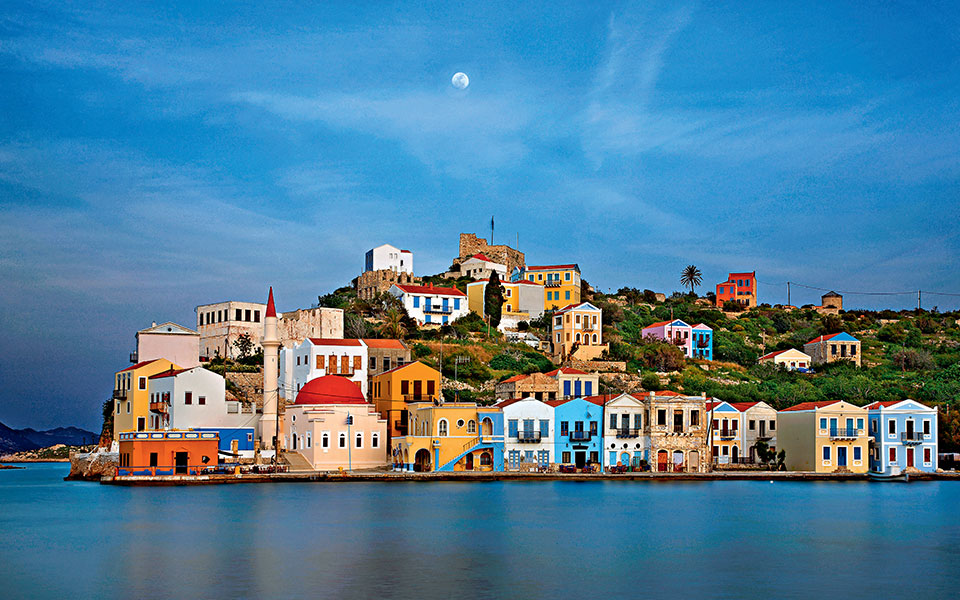EXPLORE
NEED TO KNOW: Despite being very small, Kastelorizo was known in antiquity as Megisti (“Great One”). According to the “official” interpretation, this was because it is the largest of the surrounding islands. Then again, it could perhaps be because the ancients had already realized its great geographical importance, being located at the southeastern edge of Greece and Europe and comprising a maritime crossroads between East and West. An outpost of Hellenism – which has left its traces on the island since prehistoric times – it has also long been a meeting point between different peoples.
LOVE AT FIRST SIGHT: The small, car-free town of Kastelorizo looks like a painting, with its harbor full of caiques and its colorful houses with red-tiled roofs. Follow one of the alleys that lead to Horafia Square. There, you’ll see the public school as well as two churches: one is the island’s 19th-c. cathedral, dedicated to the patron saints Constantine and Helen, and the other is the majestic Church of Aghios Georgios of Santrapé, named after one of the local benefactors, Loukas Santrapé. It was built in the early 20th century, but services are no longer held there.
Info
- Area: 9 sq. km
- Population: 500 (2011 census)
- Distance: 307 (sea miles from Piraeus)
- Highest Peak: 273m (Vigla)
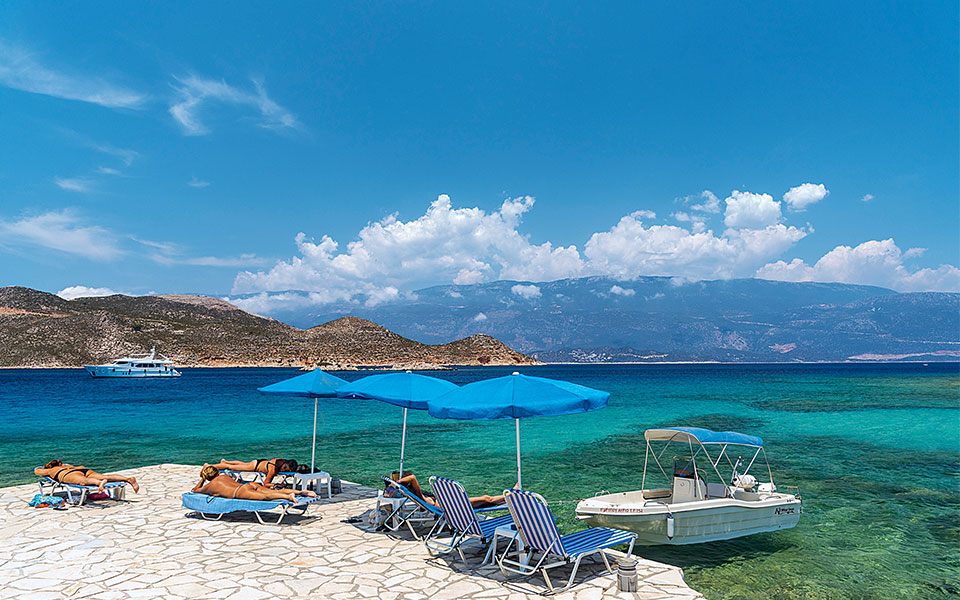
© Nikolas Leventakis
SIGHTSEEING: Follow the circular route to Mandraki, the island’s second, more tranquil harbor. Halfway there, a few stone steps lead to the 4th-c. BC Lycian Tomb (a distinctive example of the rock-cut tombs with temple-style facades found in Lycia, on the coast of Asia Minor). Walk up to the Aghios Nikolaos Castle, built by the Knights of the Order of Saint John in the 14th century, to enjoy the view and visit the listed historical building known as Konaki, which houses the Archaeological Museum. There, you can see ancient stone anchors, vases, marble statues and other finds dating from the 4th c. BC. Displays also include Byzantine writing tablets, as well as traditional local costumes and objects of folk art (Tue-Sun 8:30-15:00). More exhibits are to to be found in the old Ottoman mosque which houses the Museum of Folk Art (Tue-Sun 08:30-15:00).
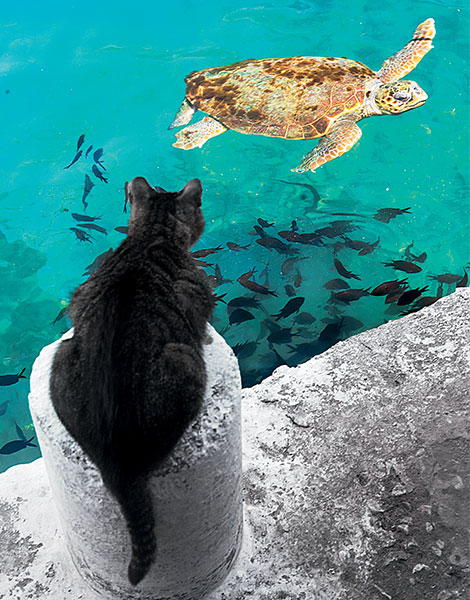
© Nikolas Leventakis
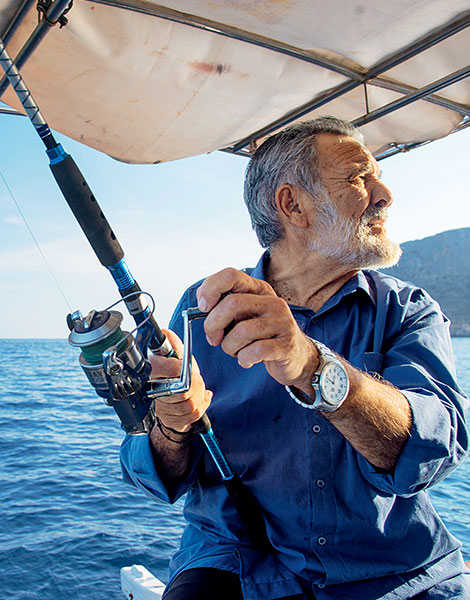
© Nikolas Leventakis
EXPERIENCE
A REWARDING WALK: The most scenic walking route is the one leading to the Monastery of Aghios Georgios tou Vounou. Visit early in the afternoon and return to the harbor by way of the stone-paved path. It will take you about half an hour, and you’ll enjoy a panoramic view of the harbor, Mandraki and the Turkish coastline across the sea.
WHERE TO SWIM: Kastelorizo doesn’t have a single sandy beach, even though it has several places for unforgettable dips, from rocky shores to quays with little ladders that make getting into (and out of) the water easy. The most popular spots are in front of the Megisti Hotel at the harbor and, right across, at the Faros Café. Another good option is the concrete platform next to the Agnandi Hotel in Mandraki. In the afternoon, when the sunlight softens, it can be very beautiful in Plakes, which can be reached by boat from the harbor. If you hire a boat, you’ll find emerald waters, shade, sun loungers and a stall selling cold drinks at the nearby islet of Aghios Georgios. The famous Blue Cave is also accessible by boat. The opening in the rock is so small that the boatman will ask you to lie flat to enter. Swimming in the cave, in the stunning reflected light, is a unique experience.
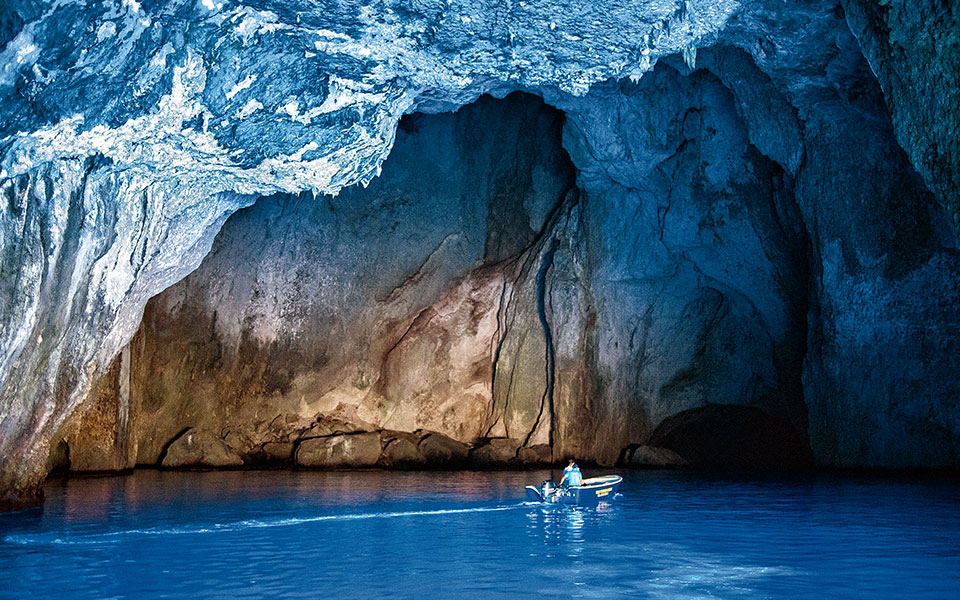
© Nikolas Leventakis
TOP QUALITY DOCUMENTARIES: “Beyond the Borders,” Kastelorizo’s International Documentary Festival, takes place at the harbor at the end of August into early September. Organized by the Hellenic History Foundation (www.idisme.gr), the festival seeks to establish the island as a meeting place for historical and socio-political documentary filmmakers. For program details, visit beyondtheborders.gr.
DON’T BE SHY: Make an effort to meet as many locals as you can and to listen to their stories. You’ll come to appreciate the special resilience of those who live on an arid yet charming frontier island.
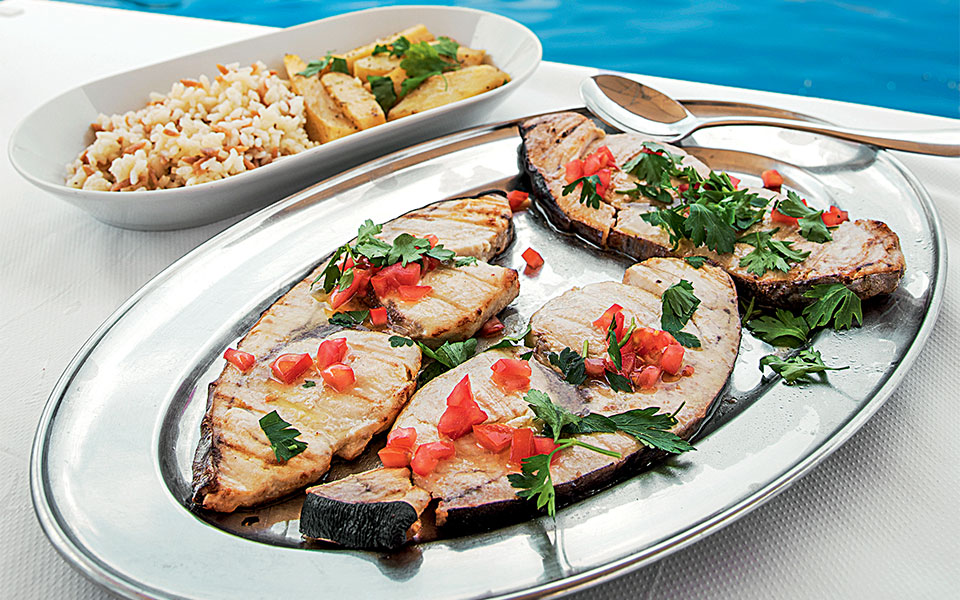
© Nikolas Leventakis
WHAT TO EAT
THE DAILY CATCH: At the harbor in the morning, you can see which taverna gets an express delivery of dusky groupers that are still alive, or where a bonito, sliced down the middle and sprinkled with oregano, is being prepared for the grill. You can see who’s brought in fresh shrimp, which is generally in great abundance and very tasty. Daily availability of fresh fish is a serious enough reason for not wanting to leave the island, even more so given that the prices tend to be very reasonable. Among the best tavernas are Alexandra’s, Lazarakis and Athina. For home-style cuisine, secure a table at Platania Taverna on Horafia Square. Try the stuffed onions, which are known by the Turkish term souam dormasi, and the vrithopites (chickpea fritters).

